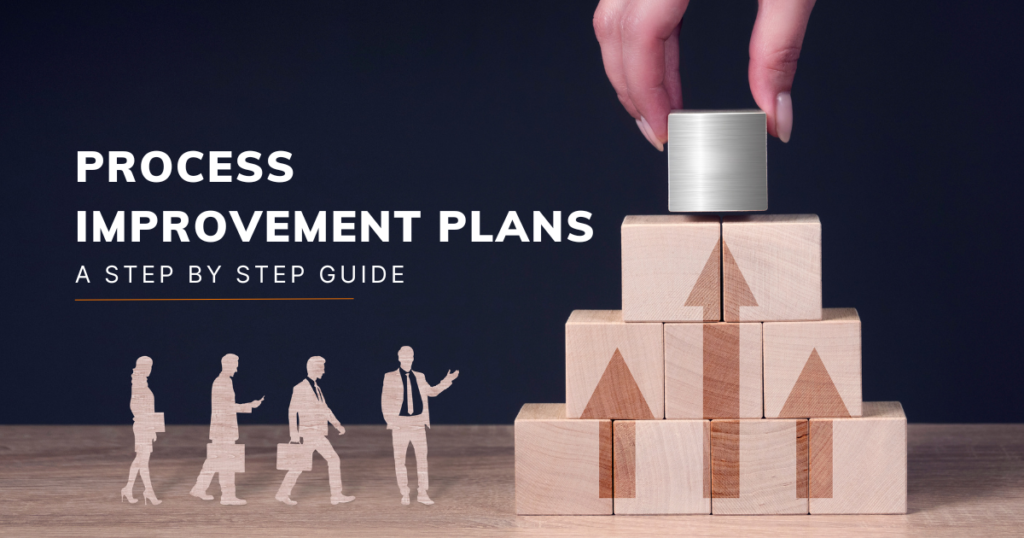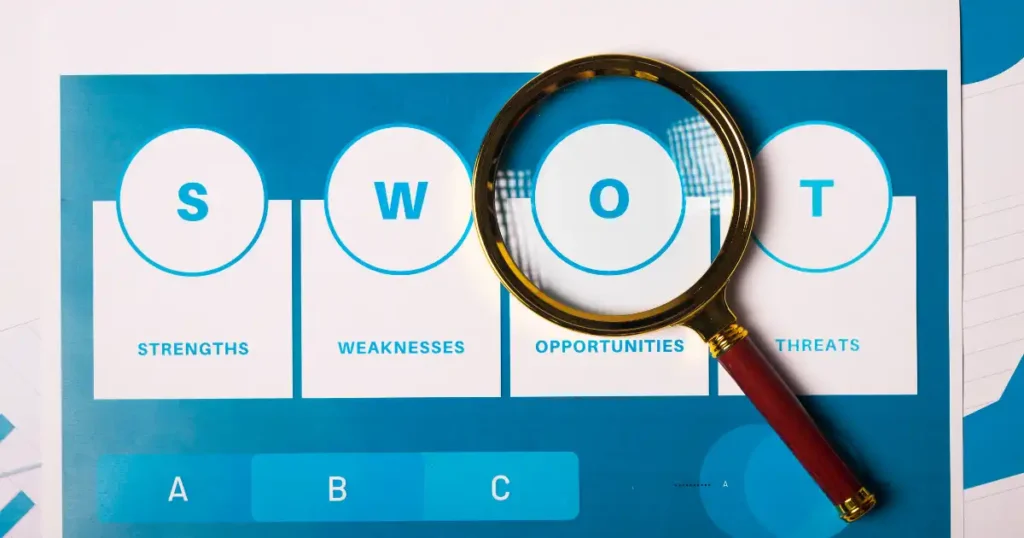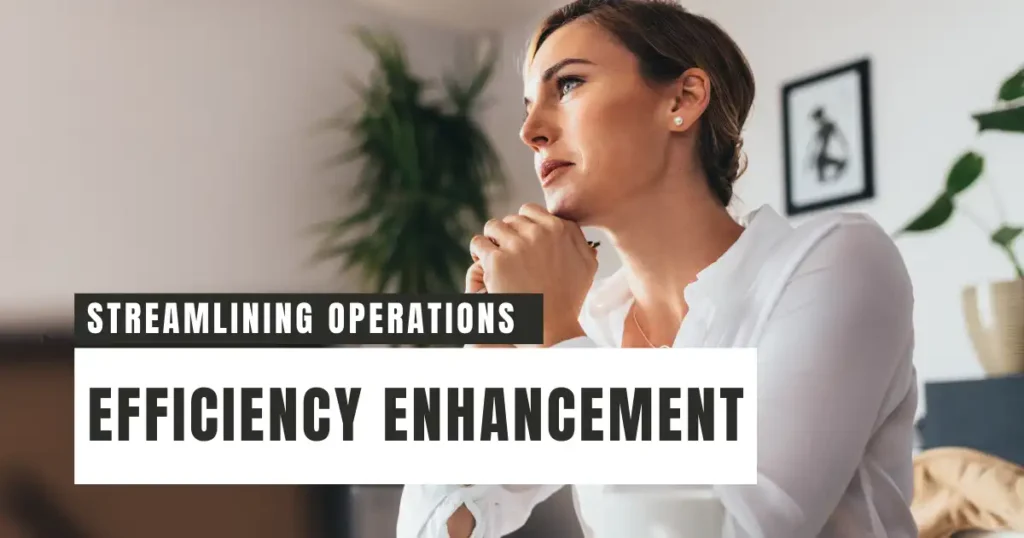Table of Contents
Process improvement is a powerful methodology and approach which IF applied correctly, can yield some fantastic results for your organization. It is the activity of looking at a process, identifying where there is waste and challenges and identifying plans to remove these. It is the effort to streamline operations, removing the unnecessary and non-value adding. It is the way in which you can deliver your products, services and outputs better, faster and in greater numbers.
To ensure you can reap the benefits and the rewards of process improvement, you need to deliver it well. That is where the process improvement plan comes in. With this plan, you have the structure, the rigour and the right approach clearly laid out for you to follow. It enables you to drop into it what you need, the teams you will be operating with and the tasks and activities you feel you need to follow in order to achieve what you want to achieve.
In this article, we will run through a common process improvement plan, one that will take you from start to finish in a clear, step-by-step way. To conduct the work needed, this plan does so in 8 stages: Define, Plan, Map, Analysis, Improvement, Preparation, Deployment and Control. Let’s explore the plan in more detail now, looking at what each stage entails and a breakdown of the activities you need to follow.
Process Improvement Plans: The detailed plan for delivery

Define
First stage – Define We will use this time to define the current situation. This will involve: Analysing current datasets to understand any trends in the problems faced. Interviewing team members to understand their perspectives and experiences.Interviewing end users of the Procurement Department’s services to understand their experiences. We will leave this stage crystal clear on the problems, the experiences and the processes in scope.
The items below can be used as a checklist of items to work through as part of this initiative. They can also be added to your initiative plan by your Initiative Manager to work through throughout your initiative with timelines and deliverables assigned to them.
Activities to conduct
| This will include customer feedback/complaints | |
| Reach out to those who can provide said data | |
| Collect relevant data required | This will include customer feedback / complaints |
| Analyse the data collected | |
| Baseline the data collected | |
| Identify trends in the data analysed | |
| Present back the findings | |
| Define the scope of the initiative | |
| Identify key stakeholders within the team | Including Management |
| Identify key stakeholders impacted | Stakeholder analysis |
| Interview all stakeholders | These interviews will include pre-set, targeted questions to get the information needed |
| Redefine scope if new information emerges | |
| Pull together a VOC survey for end users | Voice of the customer survey |
| Send out the VOC survey with a 2-week deadline | |
| Send out the VOC survey with 2-week deadline | |
| Analyse survey results | |
| Analyse feedback results and combine the two | |
| Redefine scope if new information emerges | |
| Build out your Initiative Charter | This will identify scope, problem, risks etc. |
At the end of this stage, the key deliverables will be:
- Voice of the customer analysis.
- Well-defined scope.
- An initiative charter.

Plan
Second stage – Plan We will use this time to plan out what needs to be done in this initiative. This will involve: Identifying any additional activities that need to be completed outside of this list. Plotting all activities in an initiative plan.Assigning the tasks to owners, scheduling the timeframe and scheduling updates. We will leave this stage with a clear plan of what needs to be done, when and by whom.
Activities to conduct
| Identify the needs of the team | |
| Speak with key stakeholders & teams | |
| Identify who will join the initiative team | Fairly simple task as others will identify |
| Review this list of activities to complete | |
| Identify any gaps, based on work done so far | |
| Transfer all activities over to a initiative plan | |
| List out the activities in the order to be done | |
| Add timeframes to each activity | This can be numbers or a Gantt Chart |
| Transfer all activities over to an initiative plan | |
| When complete, communicate the plan out | Assign each task to an owner |
| Schedule the relevant update meetings | |
| Build and schedule the status update |
At the end of this stage, the key deliverables will be:
- The final initiative team.
- A complete initiative plan.
- Update meetings scheduled.

Map
Third stage – Map We will use this time to map out the current problems the team is facing. This will involve: Mapping the current state processes via process mapping workshops. Identifying on the maps where the problems are occurring.Making the data we have graphical and visual. We will leave this stage with a clear visual of all in-scope processes, problems and data.
Activities to conduct
| List out all of the processes in scope | |
| Identify who needs to attend which workshop | |
| Schedule the workshops | |
| In the invites, detail the agenda of the workshops | |
| Run the process mapping workshops | Have a facilitator, good mapping software etc. |
| Map out: The workflow All activities. All handoffs. Who is involved? Which systems are involved? | |
| Run through the processes to check | |
| Ensure the maps are colour-coded | |
| Plot on the maps where these are occurring | |
| Plot the extent of the problem | Ensure the maps are colour-coded |
| Discuss/bring up problems identified before | |
| Ensure the maps are colour coded | The size and scope of certain parts. |
| Conduct process analysis | |
| Identify rework loops or bottlenecks | |
| Highlight risks | |
| Highlight opportunities for improvement | |
| Close workshops | |
| Red – Green depending on the size of issue | |
| Finalise maps |
At the end of this stage, the key deliverables will be:
- Fully detailed, end-to-end process maps.
- A visual representation of the problem faced.
- A visual representation of all key data mapped.

Analysis
Fourth stage – Analysis We will use this time to understand why the problems are occurring. This will involve: Root cause analysis workshops to understand the why behind the problems. Understand the potential causes and land on the actual causes. Gap analysis of current state processes compared with potential future state processes. We will leave this stage knowing exactly why the problems have been occurring, armed with a list of causes and knowledge of what waste exists, where and the potential to remove it.
Activities to conduct
| Review data and conversations had so far | |
| List out all problems and issues identified | |
| Pareto Chart the issues | This will identify if 80% of the issues are being generated by 20% of the causes |
| IF many issues to address, prioritise | |
| IF not many issues to address, include all | |
| Identify who needs to be in future workshops | These will be the root cause analysis workshops |
| Schedule root cause analysis workshops | |
| In the invites, detail the agenda of the workshops | |
| Run the RCA workshops | |
| Pareto Charts the issues | Tools to include fishbone diagram, 5 whys, drill down etc. |
| Identify who needs to be in future workshops | |
| Schedule detailed analysis workshops | |
| In the invites, detail the agenda of the workshops | |
| Run the detailed analysis workshops | |
| In the workshops: Plot on the process maps where improvements and opportunities can be found. Plot the root causes. Explain, in detail, why the improvements will happen there. | This will help in the future improvement workshops to come in the next phase of the initiative. |
| Close workshops | All issues must have causes associated with them |
At the end of this stage, the key deliverables will be:
- All problems are root causes.
- Actual causes identified.
- Process maps containing further information.
Join our Process Improvement Certification Program

Improvement
Fifth stage – Improvement We will use this time to identify the solutions and changes needed. This will involve A workshop to identify all potential improvements to address waste and productivity. A workshop to identify all potential solutions to be deployed to address problems. Work through the maps to transfer potential to actual that will be deployed. We will leave this stage knowing exactly the changes and improvements to be delivered and which ones have been parked for now.
Activities to conduct
| Identify who needs to be in future workshops | These will be improvement workshops |
| Schedule improvement workshops | |
| In the invites, detail the agenda of the workshops | |
| Run the improvement workshops | |
| In the workshops: Identify all waste within the process Identify all opportunities present Identify the improvements you want | |
| Identify who needs to be in future workshops | |
| Schedule solutions workshops | |
| In the invites, detail the agenda of the workshops | |
| Run the solutions workshops | |
| In the workshops: Identify all potential solutions. Plot these within the processes. | These are to fix the problems and issues we have been seeing. |
| Schedule mapping workshops | |
| In the invites, detail the agenda of the workshops | |
| Run the mapping workshops | |
| In the workshops: Identify all potential solutions within the processes | These will be the proposed future state maps to be deployed in the business. |
| Close workshops | |
| Take maps away to amend and finalise | |
| Send maps out for review |
At the end of this stage, the key deliverables will be:
- All improvements and solutions identified and mapped.
- Future state process maps completed.

Preparation
Sixth stage – Preparation We will use this time to get the processes and teams ready to go LIVE. This will involve: Test the improvements and solutions using dummy data and scenarios. Pilot testing the changes using a small sample size. Plan for the full go LIVE of the changes, including an implementation plan. We will leave this stage with full confidence that the changes and improvements are the correct ones and will land well on day 1 of going LIVE.
Activities to conduct
| Build a testing plan | |
| Gather and set up the dummy data and processes | |
| Set up the test scenarios | |
| Run the test scenarios | |
| Analyse the results of the test scenarios | |
| Repeat the testing as many times as needed | |
| Schedule the pilot test | |
| Choose the small sample to test | |
| Identify who will be involved in this testing | |
| Communicate out what this will entail | |
| Run the pilot testing | |
| Review the results of the pilot testing | |
| Repeat the test as many times as needed | |
| Fix any issues identified | |
| Close the testing | |
| Update future state process maps to NEW Add in any changes made | |
| Build the implementation plan | |
| Communicate out the implementation plan | |
| Schedule any meetings, sessions required |
At the end of this stage, the key deliverables will be:
- Testing and piloting results document.
- An implementation plan.
- All new process maps.

Deployment
Seventh stage – Deployment We will use this time to deploy the solutions and changes needed. This stage may take some time, depending on the types of improvement. This will involve: Deploying the changes as per the implementation plan built in stage 6. Ensuring Change Management is in check.Communicating out the changes to all. We will leave this stage with all improvements and changes deployed and the new situation LIVE.
Activities to conduct
| Activate the implementation plan | |
| Deploy all process changes as per that plan | |
| Communicate out that the work is happening | |
| Monitor the performance throughout delivery: Keep an eye on dataKeep an eye on feedback | |
| Ensure all change is managed efficiently | |
| Build out communications to send throughout | |
| Send out comms before, during and after | Communication is absolutely critical here. |
| Ensure new process maps are readily available | |
| Formally close the implementation stage |
At the end of this stage, the key deliverables will be:
- New processes/changes LIVE.
- All teams and departments are well-informed.

Control
Eighth stage – Control We will use this time to ensure the changes deployed will last. This will involve: Adding the right controls into the amended processes (if not already done). Set up the tracking/control charts to analyse long-term performance data. Compare the performance of the new processes with the original baseline data. Communicate out benefits realisation. We will leave this stage with the business improvement initiative now completed and closed with full confidence the changes we have made will last the test of time.
Activities to conduct
Please note, that some of the work around building in controls to the processes would have already been done. If so, you can pass over those steps.
| Identify where controls may be required | Send out the benefits realisation piece Including benefits of initiative outcome of all work doneBaseline vs. new performance data |
| Build out a control plan | |
| Work to add these controls in | |
| This will be based on work done so far and the performance of new processes so far. | |
| If required, tighten said controls | |
| IF controls are already in place, assess the need to tighten these | |
| Compare baseline data with new data | |
| Send out the benefits realisation piece Including benefits of initiative outcome of all work doneBaseline vs. new performance data | |
| Conduct a lessons-learned exercise | |
| Send out the benefits realisation piece Includes benefits of initiative outcome of all work doneBaseline vs. new performance data |
At the end of this stage, the key deliverables will be:
- A control plan.
- Lessons learned pack.
- Benefits realisation piece.
End
If you deliver the plan as detailed above, you will see significant results for your organization. Remember, this approach is tried and tested. It has been deployed in many companies, many industries and to address many challenges. It is not a one size fits all, can be tailored to your individual and business needs and can be amended as you see fit. At this stage in the article, I want to call out a final few points.
Firstly, it is really important you state clearly at the start what it is you are seeking to improve and achieve with the work you are doing. This enables benefits realization at the end of the project to show really clearly what state you have moved from. If you can show how you have achieved the benefits you wanted to through the approach you have taken, you are more likely to increase buy in for future process improvement work.
Secondly, you need to have good data to hand at the start of this work. Again, this data can be used as a baseline to clearly showcase what is happening at the start of the work you are conducting and how these metrics have been impacted by the work done. To get this data, you can either pull on existing data in the business or you can create fresh, new data from customers, colleagues or the systems you use.
Finally, it is really important you follow the plan in full. Even if you amend some of the steps and stages, this framework has been tried and tested in many industries, instances and in many companies. It is one of those frameworks that clearly defines what you need to do, step by step, stage by stage, to ensure you can achieve what you set out to achieve at the start. It will confidently deliver the results you had anticipated and, if done well, in good time.
A good process improvement plan is only half the journey, however. To deliver it successfully, you need strong committed individuals who are excited about the work, have good experience and exposure to the world of process improvement and who have a vested interest in the work being done.







